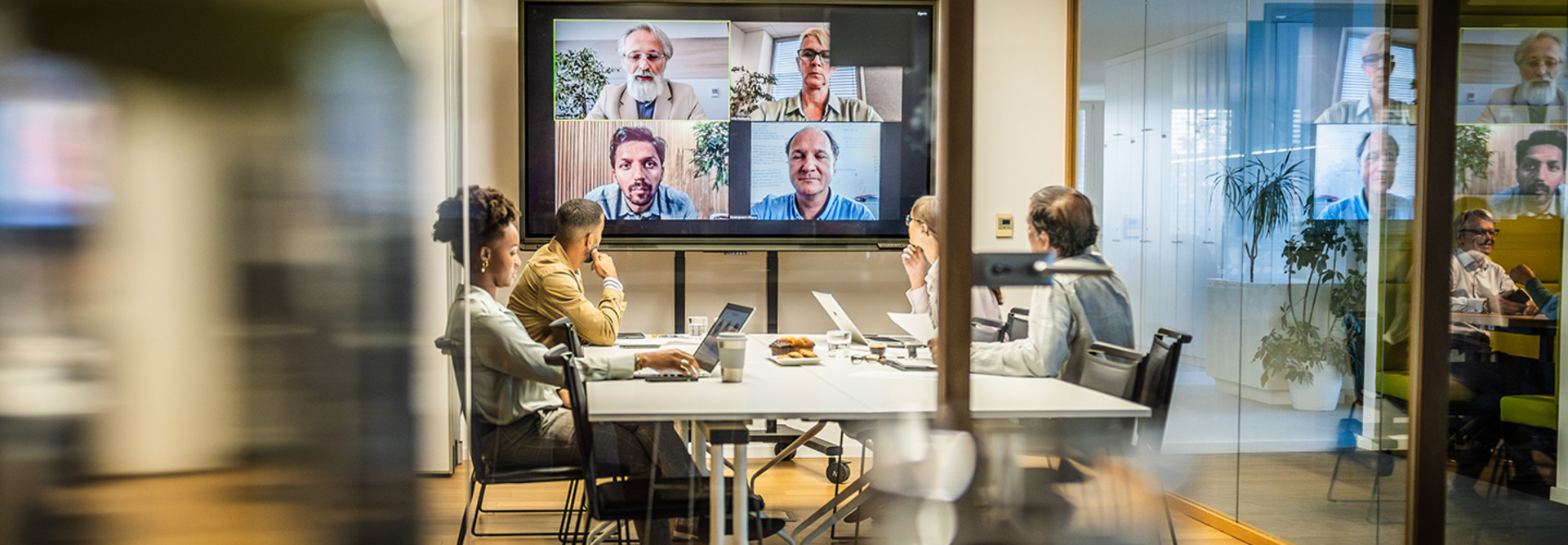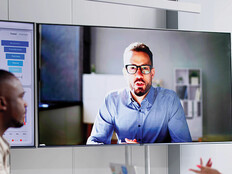Take Collaboration to the Next Level with Conferencing Tools
With collaboration tools, state and local governments can adjust workflows to break down barriers between distributed teammates working in the office or remotely. Solutions such as Microsoft 365 enable employees to create content and collaborate across locations. But employees can truly engage with one another through voice and videoconferencing solutions.
There is a profound difference between chatting in a meeting and then having resources made available to you versus participating in a vibrant meeting experience that brings in-person and remote participants together in a meaningful way. Officials can gain ground on building meeting equity by enhancing the voice and video options available for government employees. Imagine joining an online meeting in which note taking is automated, allowing meeting participants to engage in deeper discussions.
In the past decade, offices have gone from traditional, audio-only conference calls to sharing desktops, whiteboarding and assessing deliverables in real time via videoconferencing. Meeting participants have become more engaged, and their ability to share has advanced the goal of meeting equity and allowing all employee voices to be heard.
Workers appreciate the ability to work from home when offered by state and local governments. They can join meetings from smartphones while they are on the go. People embrace that kind of flexibility, which improves their work-life balance. Leaders in turn must understand how to support that flexibility and provide their employees with the freedom of mobility. Basic videoconferencing tools, such as wireless headsets and professional cameras, go a long way toward facilitating mobility and opening the doors to participation.
Jabra’s Hybrid Ways of Working 2022 Global Report found that 61 percent of employees feel more “included and present in meetings” when all participants activate their video cameras. Seventy percent said that professional video cameras support equal participation by everyone in hybrid work conferences.
READ MORE: Here is how state CIOs can build a more resilient workforce.
Promote Meeting Equity with Seamless Solutions
Companies such as Cisco, Logitech and Microsoft manufacture powerful solutions for multicamera conferencing that can seat people at a virtual table. These outstanding solutions create a virtual conference room for participants regardless of where they work. With this level of professional video presence, workers can see facial expressions of their colleagues and react in the moment to what is happening. Such technologies give a true front-facing view of everyone in a meeting, boosting meeting equity.
The Logitech Rally Bar takes it a step further by tracking the active speaker and placing them front and center in the meeting. There is a natural inclination to look at the display when speaking to a remote participant, so mounting a camera at eye level eases conversation through casual eye contact with remote participants. Logitech, Owl Labs, Samsung and other manufacturers also produce electronic whiteboards that can digitize writing and display it for all meeting participants. Logitech’s solution, for example, places a literal drawing board in the meeting.
Agencies should seek to empower their employees with simple-to-use, high-quality devices, such as the Cisco Desk Pro. This device integrates Webex videoconferencing capabilities in one convenient package. Similar solutions ease meeting inclusion and promote collaboration by simplifying participation. Hybrid work employees can seamlessly join from anywhere by pressing one button.
Rather than focusing simply on creating deliverables, agencies can foster innovation by providing an equitable meeting experience for employees collaborating from different places. Hybrid conferencing solutions play a key role in facilitating this process.
This article is part of StateTech’s CITizen blog series.












